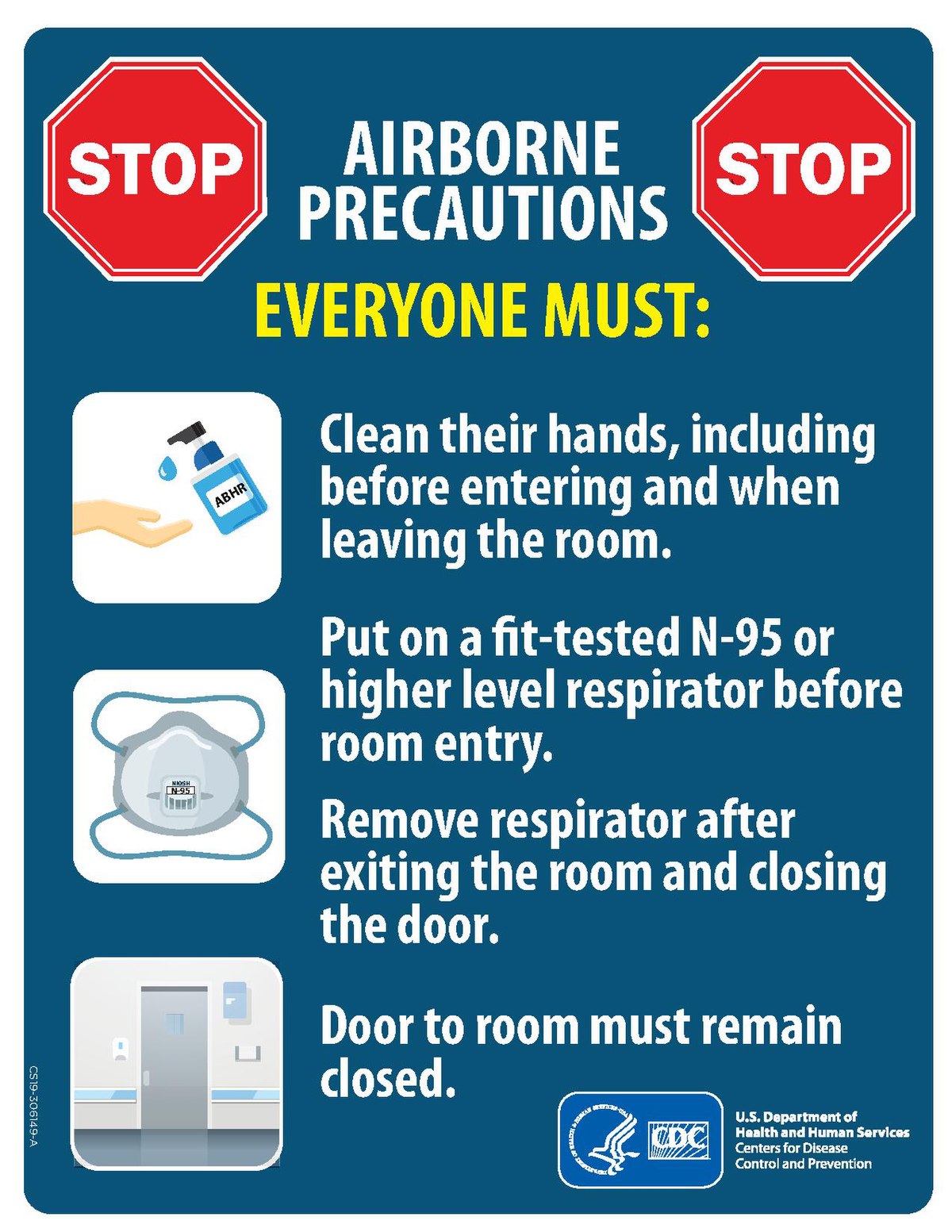Airborne Precautions Should Be Followed for Which Illness
Most people recover in 7-10 days or so. 66 Exposure standard - an airborne concentration of a particular substance in the persons breathing zone exposure to which according to current knowledge should not cause adverse health effects nor cause undue discomfort to nearly all persons.

Penyakit Bawaan Udara Wikipedia Bahasa Indonesia Ensiklopedia Bebas
Bedside equipment and other frequently touched surfaces and ensure that these procedures are being followed.
. Airborne Precautions are. Airborne infectious pathogen AirIP. Droplet precautions should be implemented for patients with suspected or confirmed influenza for 7 days after illness onset or until 24 hours after the resolution of fever and respiratory symptoms whichever is longer while a patient is in a healthcare facility.
1 an aerosol transmissible pathogen transmitted through dissemination of airborne droplet nuclei small particle aerosols or dust particles containing the infectious agent and for which the CDC or CDPH recommends AII as listed in Appendix A or 2 a novel or unknown pathogen for which there is no evidence to rule out with. You can help reduce your risk of getting a cold by washing your hands often and avoid touching your face with unwashed hands. Asbestos exposure can lead to serious diseases including asbestosis lung cancer and mesothelioma.
10 Use Contact Precautions for diapered or incontinent children illness. The exposure standard can be of three forms. Exposure is most common in the workplace but it can happen at home in a public building or the military.
Category IB Linen. Sore throat and runny nose are usually the first signs of a cold followed by coughing and sneezing. 11 Maintain precautions in infants and.
Time-weighted average TWA short -term exposure.

No comments for "Airborne Precautions Should Be Followed for Which Illness"
Post a Comment